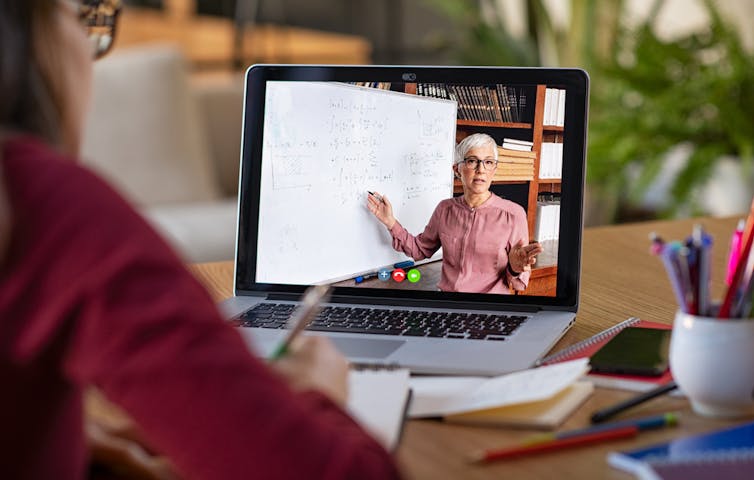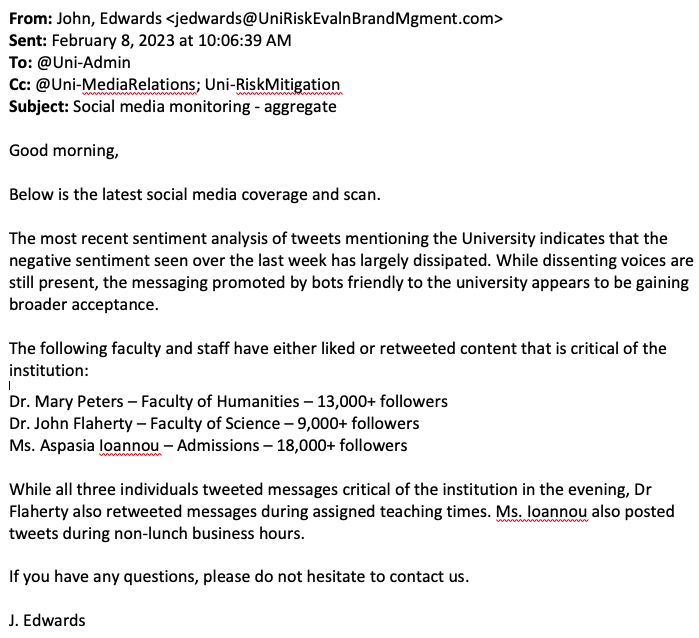Below is the the pre-published version of a short reflection I wrote for Distance Education, published here for posterity. The paper is Veletsianos, G. (2020). How should we respond to the life-altering crises that education is facing? Distance Education, 41(4), 1-3. https://doi.org/10.1080/01587919.2020.1825066
Abstract
Prior literature suggests that to address the problems facing education, researchers and practitioners of online and flexible learning should avoid placing too much emphasis on the potential of technology and consult the history and literature of the field. In this reflective article, I argue that in addition to these activities, we should expand our efforts to broaden the reach and impact of our field and engage in speculative work that asks: What should the future of digital, online, and flexible education look like?
Introduction
“In this increasingly unstable world, crises potentially impact our education systems. This will be true whether the crisis is caused by the circulation of a new pathogen, or something else entirely: hurricanes, flooding or wildfire, now more common due to climate change. We have before us a stark reminder that we should approach the promises of technological solutions with caution. Flexible and resilient educational systems require more than tools. They demand collaboration, care, preparation, expertise, resources and learning lessons from the past. (Houlden & Veletsianos, 2020)”
We wrote the sentences above in March 2020, 2 weeks before educational institutions in North America transitioned to remote education in an attempt to influence practitioners’ and researchers’ responses to the life-altering crises that education is facing. We were hoping to convince readers that even though technology may enable institutions of education to engage in some semblance of educational continuity, technology will not fix the crises facing our educational systems. Such reasoning flows from a long line of scholarship that details the problems of technological determinism and solutionism in our field (e.g., Bayne, 2015; Oliver, 2011; Tennyson 1994), urges researchers and practitioners to avoid placing too much emphasis on the potential of technology (e.g., Selwyn, 2011), and encourages us to heed the lessons embedded in the history of the field (e.g., Watters, 2014; Weller, 2020). Similar arguments are included in this issue of Distance Education as well. Baggaley, for instance, argues that “the surest way to make online learning effective is to consult the decades of practical experience in the distance education literature.” But what may be some additional responses to such life-altering crises as COVID-19 and climate change?
One possible response may include efforts to broaden the reach and impact of the distance and flexible education literature, as well as literature present in related fields, such as instructional design and technology, learning analytics, and the learning sciences. Such efforts may address limitations that restrict the literature’s helpfulness, applicability, and accessibility. For instance, the literature suffers from a problem of access. Much of our literature, like the literature of other fields, is written for researchers rather than practitioners, and much of it is locked behind paywalls (like this reflection). One set of responses, therefore, may be to refine and rethink the ways our own scholarship is accessed. For instance, at an individual level, we might strive to make our own articles available in open ways, expand our public outreach, engage in more practice-oriented scholarship, write for broader audiences, and address inequities in knowledge production, dissemination, and consumption (cf Czerniewicz, 2013; Scharber et al., 2019). At a systemic level, we may question practices like top-tier publishing, rankings, impact factors, and the various practices that sustain and encourage these, such as institutional policies on promotion and advancement and grant-funding decisions.
A second possible response may involve reflecting on our own scholarship and the scholarship we support, reward, and encourage. Reeves and Lin (2020) argue that to make a real difference in the lives of learners we should be studying and solving problems, rather than studying tools and technologies. In effect, these authors urge us to ask whether our particular work, the work of our students, and the work of our colleagues contributes to better educational futures. My intent here is not to draw demarcation lines between appropriate and inappropriate scholarship. Instead, if higher education is facing the very real possibility that the post-pandemic era may be radically different than our earlier “normal” (Cox et al., 2020), this may be a good time to ask: What should the future of digital, online, and flexible education look like?
This is not a call for more hopeful writing of the possibilities of online education or educational technology. Instead, it is a call for more critical and speculative writing and practice. Such critical efforts are gaining broader visibility and interest and can be found in recent work in both this journal (e.g., Valcarlos et al., 2020) and elsewhere (e.g., Lambert, 2018). To imagine possible educational futures, some researchers are turning to speculative methods as “research approaches that explore and create possible futures under conditions of complexity and uncertainty” (Ross, 2018, p. 197). Envisioning such futures does not solely mean employing fiction in our writing. Rather, speculative methods “inform us about what matters now in the field, what issues and problems we have inherited, and what debates define what can or cannot be currently thought about or imagined” (Ross, 2017, p. 220). Considering that the current state of education, at all levels, is situated within a context of ever-evolving social, cultural, political, and technological shifts, we face an urgent need to engage with uncertainty on multiple levels.
The use of speculative methods, therefore, may enable us to offer guidance when making current decisions related to the future of higher education, and to explore what may or may not be possible in different contexts. In a special issue of Learning, Media and Technology (Selwyn et al., 2019) for example, colleagues examined near-future educational scenarios and critically contemplated the use of technology in education. To use an example of present activities to speculate about desirable and undesirable educational futures, consider the now-broader use of proctoring tools, which were largely adopted to maintain the continuity of such familiar practices as invigilated exams. Now consider a future in which proctoring tools are as pervasive as the use of learning management systems or even email. Are proctoring tools consistent with desirable future educational systems? Asking this question forces us to deal with the ethics of our work. What if, in the process of asking this question, we realize that adopting proctoring software may not only become a barrier to alternative assessments but may also foster a culture of surveillance and mistrust (e.g., Fawns & Ross, 2020; Swauger, 2020)?
Conclusion
Clearly, technology alone will be unable to provide a solution to such a complicated problem as responding to the complex challenges that educational systems worldwide are facing. The two possible responses I offer—broadening the reach and impact of our scholarship and engaging in more imaginative, speculative, and critical work—are not panaceas either. Unlike technological solutionism though, these actions respond to calls by Facer and Sanford (2010), Ross (2017), Staley (2019), and Alexander (2020) to develop scenarios for the future of higher education as a way to address current challenges and work toward desirable outcomes. I imagine such futures to be inclusive, equitable, and just; to serve all of our learners; to prioritize collaboration over competition; to be flexible to learners’ needs; to exhibit care and trust for our students; and to be free of systems of oppression and injustice that operate within our own institutions.
References
Alexander, B. (2020). Academia next: The futures of higher education . Johns Hopkins University Press.
Bayne, S. (2015). What’s the matter with ‘technology-enhanced learning’? Learning, Media and Technology , 40(1), 5–20.
Cox, R. , Slick, J. , & Dixon, T. (2020). Surviving, thriving, or radical revisioning: Scenarios and considerations for pandemic recovery and response planning . Royal Roads University.
Czerniewicz, L. (2013, April 29). Inequitable power dynamics of global knowledge production and exchange must be confronted head on. Impact of Social Science. https://press.rebus.community/openatthemargins/chapter/repost-inequitable-power-knowledge/
Facer, K. , & Sandford, R. (2010). The next 25 years? Future scenarios and future directions for education and technology. Journal of Computer Assisted Learning , 26(1), 74–93.
Fawns, T. , & Ross, J. (2020, June 3). Spotlight on alternative assessment methods: Alternatives to exams. Teaching Matters . https://www.teaching-matters-blog.ed.ac.uk/spotlight-on-alternative-assessment-methods-alternatives-to-exams/
Houlden, S. , & Veletsianos, G. (2020, March 13). COVID-19 pushes universities to switch to online classes—but are they ready? The Conversation. https://theconversation.com/covid-19-pushes-universities-to-switch-to-online-classes-but-are-they-ready-132728
Lambert, S. R. (2018). Changing our (dis)course: A distinctive social justice aligned definition of open education. Journal of Learning for Development , 5(3), 225–244. https://jl4d.org/index.php/ejl4d/article/view/290/334
Oliver, M. (2011). Technological determinism in educational technology research: some alternative ways of thinking about the relationship between learning and technology. Journal of Computer Assisted Learning , 27(5), 373–384.
Reeves, T. C. , & Lin, L. (2020). The research we have is not the research we need. Educational Technology Research and Development , 68(4), 1991–2001.
Ross, J. (2017). Speculative method in digital education research. Learning, Media and Technology , 42(2), 214–229.
Ross, J. , (2018). Speculative method as an approach to researching emerging educational issues and technologies. In L. Hamilton & J. Ravenscroft (Eds,), Building research design in education (pp. 197–212). Bloomsbury.
Scharber, C. , Pazurek, A. , & Ouyang, F. (2019). Illuminating the (in)visibility of female scholars: A gendered analysis of publishing rates within educational technology journals from 2004 to 2015. Gender and Education , 31(1), 33–61.
Selwyn, N. (2011). In praise of pessimism—the need for negativity in educational technology. British Journal of Educational Technology , 42(5), 713–718.
Selwyn, N. , Hillman, T. , Eynon, R. , Ferreira, G. , Knox, J. , Macgilchrist, F. , & Sancho-Gil, J. M. (Eds.). (2019). Education and technology into the 2020s: Speculative futures [Special issue]. Learning, Media and Technology , 45(1).
Staley, D. J. (2019). Alternative universities: Speculative design for innovation in higher education . Johns Hopkins University Press.
Swauger, S. (2020). Our bodies encoded: Algorithmic test proctoring in higher education. In J. Stommel, C. Friend, & S. M. Morris (Eds.), Critical digital pedagogy: A collection. Pressbooks. https://cdpcollection.pressbooks.com/chapter/our-bodies-encoded-algorithmic-test-proctoring-in-higher-education/
Tennyson, R. D. (1994). The big wrench vs. integrated approaches: The great media debate. Educational Technology Research and Development , 42(3), 15–28.
Valcarlos, M. M. , Wolgemuth, J. R. , Haraf, S. , & Fisk, N. (2020). Anti-oppressive pedagogies in online learning: A critical review. Distance Education , 41(3), 345–360.
Watters, A. (2014). The monsters of education technology. Tech Gypsies Publishing. http://monsters.hackeducation.com
Weller, M. (2020). 25 years of ed tech . Athabasca University Press.




